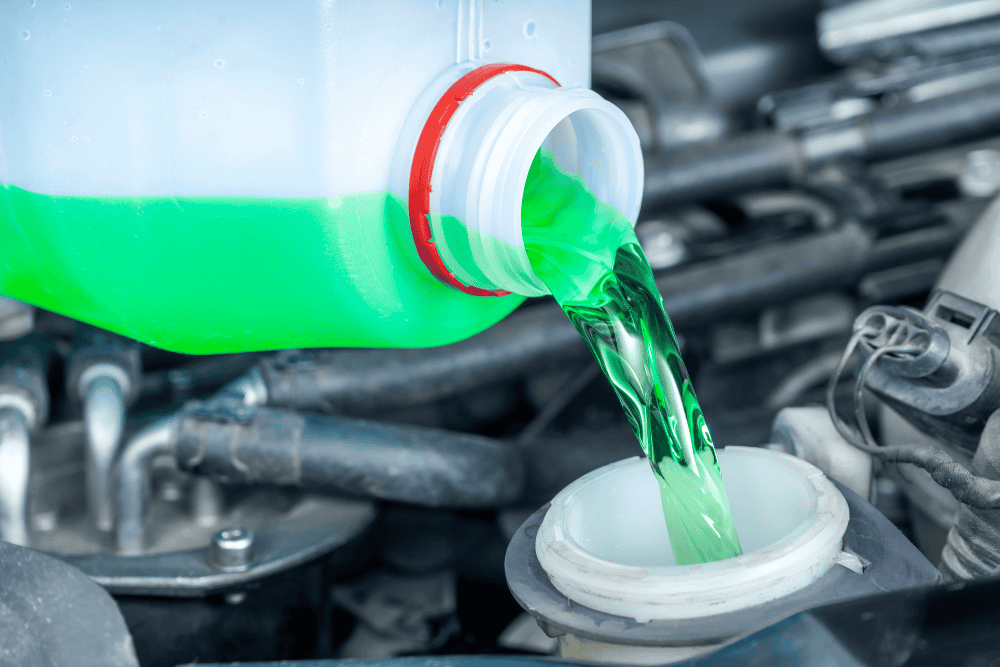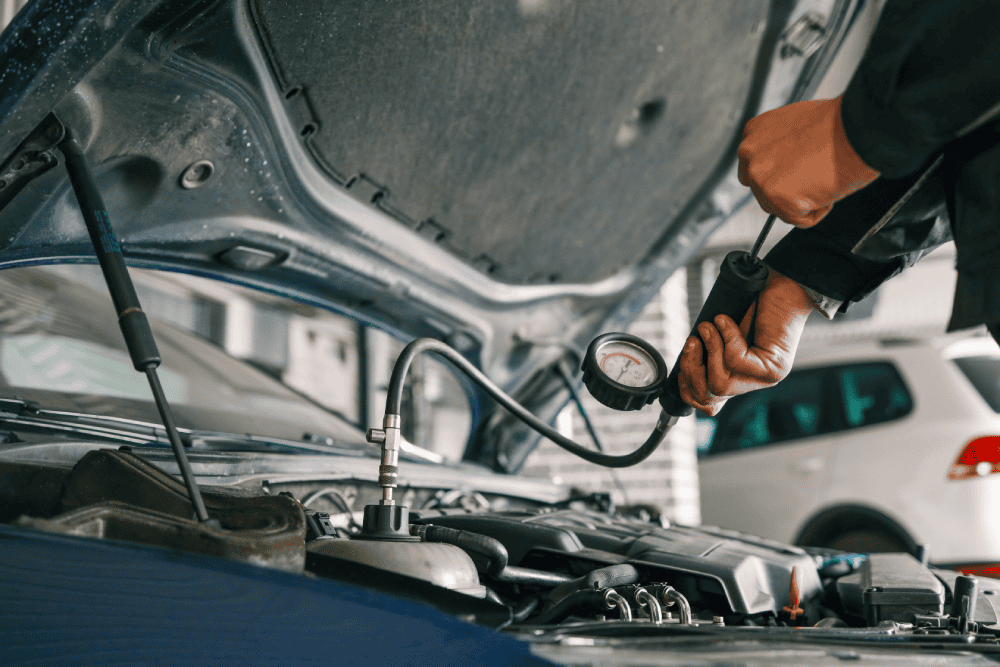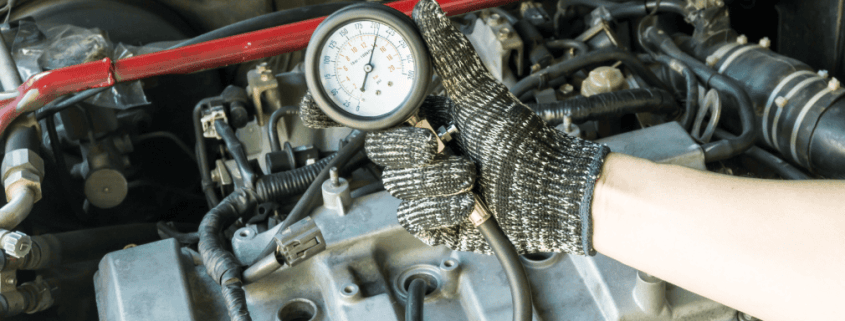How do you pressure test a cooling system?
A vehicle’s cooling system is crucial for maintaining optimal engine temperature. If your cooling system is experiencing issues like overheating, leaks, or pressure build-up, a pressure test can help diagnose the problem. This simple yet effective test helps identify leaks, failing components, and other potential causes of excessive pressure in the system.
In this guide, we’ll explain why a cooling system is pressurised, what causes pressure fluctuations, and how to perform a cooling system pressure test to keep your vehicle running smoothly.
Why is a cooling system pressurised?
Your vehicle’s cooling system is designed to operate under pressure. The pressure inside the system raises the coolant’s boiling point, allowing it to absorb more heat from the engine without boiling. A properly functioning system should maintain a stable pressure level to prevent overheating and ensure efficient heat dissipation.
How much pressure does a cooling system have?
Most cooling systems operate at a pressure between 80 to 110 kPa (12 to 16 psi). The exact pressure level depends on the vehicle’s design and radiator cap specifications. If the pressure is too high or too low, it can indicate underlying issues that must be addressed.
What causes excessive pressure in a cooling system?
Excessive pressure in a cooling system can lead to blown hoses, coolant leaks, or engine damage. Here are some common reasons why your cooling system may be building too much pressure:
Faulty radiator cap
A malfunctioning radiator cap may not release excess pressure as intended. If the cap is unable to regulate pressure properly, it can lead to dangerous pressure build-up within the system.
Head gasket failure
A blown head gasket can allow combustion gases to enter the cooling system, causing pressure to spike. This can lead to overheating, coolant loss, and potential engine damage if not addressed.
Restricted coolant flow
Blockages in the radiator, heater core, or coolant passages can cause pressure build-up. Debris, corrosion, or a malfunctioning thermostat can restrict the flow of coolant, leading to overheating and excessive pressure.
Overheating engine
Excessive heat causes coolant to expand, increasing pressure beyond safe levels. If the engine is running too hot due to poor airflow or a failing cooling fan, the system may struggle to regulate pressure effectively.
Incorrect coolant mixture
Using the wrong type or ratio of coolant can impact pressure regulation. An improper coolant mix can reduce efficiency, contribute to corrosion, and prevent the cooling system from functioning correctly. It’s important to choose the right coolant for your vehicle to maintain performance.

What causes no pressure in a cooling system?
A cooling system that lacks pressure can be just as problematic as excessive pressure. Here are some reasons why your cooling system may have no pressure.
Leaking hoses or connections
Coolant leaks reduce pressure and cause overheating, leading to inefficient engine cooling. If hoses or connections are cracked or loose, coolant can escape, reducing system pressure.
Faulty radiator cap
If the radiator cap isn’t sealing properly, it won’t maintain pressure in the system. This can result in coolant loss and reduced cooling efficiency.
Low coolant levels
Insufficient coolant can lead to low pressure and an increased risk of overheating. Regularly checking coolant levels can help maintain system pressure.
Air pockets in the system
Air trapped in the system can disrupt pressure balance, causing erratic temperature fluctuations. Bleeding the cooling system removes air pockets and restores consistent pressure.
Water pump failure
A malfunctioning water pump may not circulate coolant properly, leading to a lack of pressure. If the pump is worn or damaged, coolant flow is reduced, causing overheating issues.
How to pressure test a cooling system
If your cooling system is experiencing pressure-related issues, performing a pressure test is an effective way to diagnose problems and identify any change in pressure. You can do this at home with a cooling system pressure tester, or you can visit a professional for an expert assessment.
Steps to pressure test your cooling system
1. Prepare the vehicle
Ensure the engine is cool before starting the test to avoid burns or injuries. Park the vehicle on a level surface, open the bonnet, and carefully remove the radiator cap.
2. Attach the pressure tester
Secure the pressure tester to the radiator or coolant reservoir. Pump the tester to apply pressure, typically to the level specified on the radiator cap, and check the gauge for accuracy.
3. Observe the pressure gauge
A steady reading indicates that the system is holding pressure properly. If the pressure drops, there is likely a leak somewhere in the system that needs to be identified and repaired.
4. Check for leaks
Inspect hoses, radiator seams, heater core, and engine block for signs of coolant leakage. Look for puddles of coolant under the vehicle or wet spots on hoses and engine components, as these indicate possible leaks.
5. Release the pressure and reassemble
Once testing is complete, carefully release pressure from the system. Remove the pressure tester and reinstall the radiator cap securely.

What should you do if your cooling system fails the pressure test?
If your cooling system fails the pressure test, you should:
- Inspect the radiator cap – replace it if it’s worn or faulty.
- Check for visible leaks – hoses, radiator seams, and heater core connections should be inspected.
- Look for signs of head gasket failure – milky oil or white smoke from the exhaust may indicate a blown gasket.
- Flush and refill the cooling system – old or contaminated coolant can cause issues.
If you’re unsure about the cause of pressure fluctuations, visiting a cooling system specialist is the best way to prevent further engine damage.
Nip into Natrad for professional cooling system servicing
If your vehicle is experiencing cooling system pressure issues, Natrad’s radiator specialists can help. We provide cooling system diagnostics, radiator repairs, and replacements to keep your car running efficiently. Our experienced technicians can pressure test your cooling system, identify leaks, and restore your vehicle’s cooling performance.
Book a cooling system inspection with Natrad today and drive with confidence.









